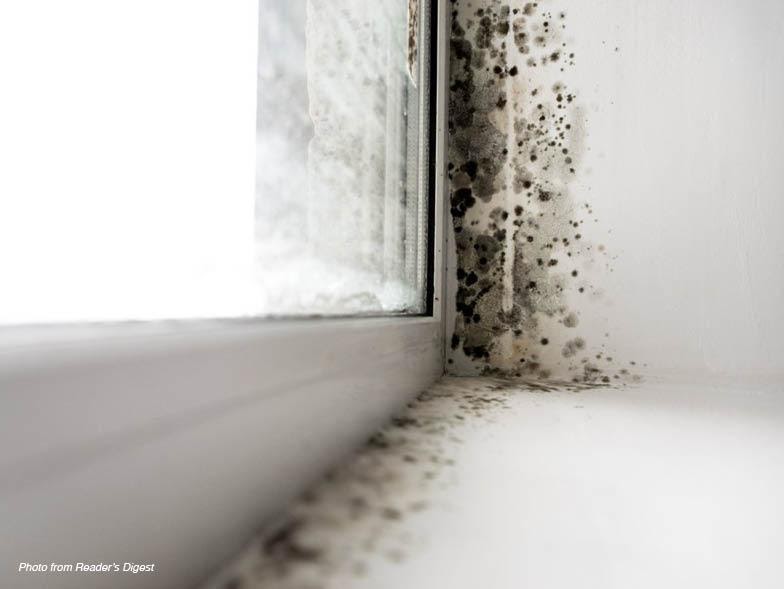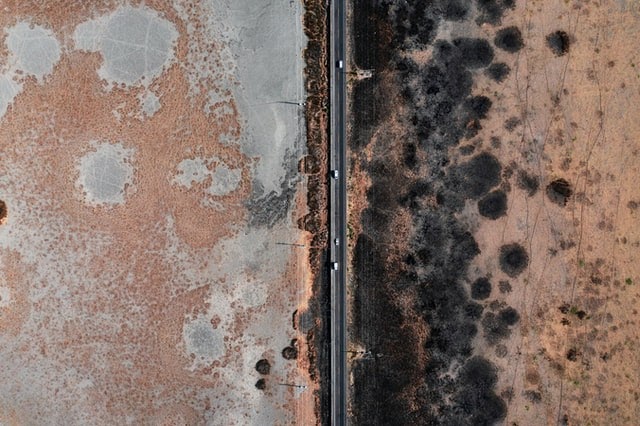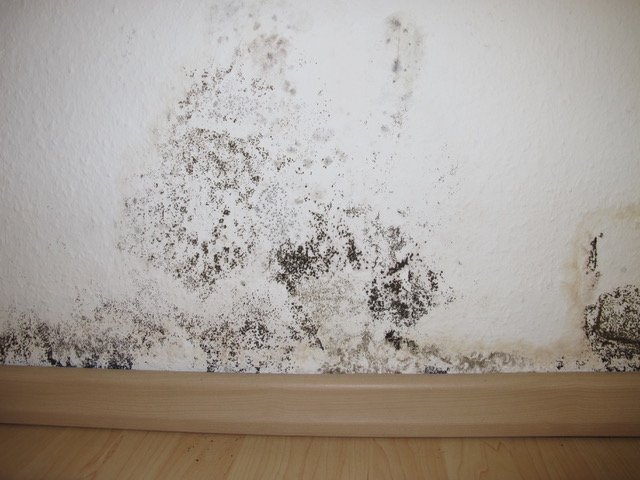Have you ever wondered what toxic mold actually looks like? It’s important to be able to identify it, especially because it can pose serious health risks. In this article, we will explore the appearance of toxic mold and provide you with helpful tips on how to recognize it. Stay informed and learn how to keep yourself and your loved ones safe from the harmful effects of toxic mold.

Common Types of Toxic Mold
Toxic mold can come in various forms and can be found in different environments. Here are some of the most common types of toxic mold:
Stachybotrys chartarum
Stachybotrys chartarum, also known as black mold, is one of the most well-known and dangerous types of toxic mold. It appears as slimy, greenish-black patches and is typically found in areas with a lot of moisture, such as damp basements or bathrooms.
Aspergillus
Aspergillus is a common type of mold that can be found both indoors and outdoors. It can come in different colors, including green, yellow, and brown. Aspergillus can grow on various surfaces, including walls, carpets, and insulation.
Penicillium
Penicillium is a type of mold commonly found in water-damaged buildings and can grow on materials with high cellulose content, such as wood and paper. It appears as blue or green fuzzy patches and can cause allergic reactions in some individuals.
Cladosporium
Cladosporium is a mold that can grow on both living and dead plants, as well as on various materials indoors. It appears as black or olive-green patches and is commonly found in humid environments, such as bathrooms and kitchens.
Alternaria
Alternaria is a mold commonly found in damp places, including showers and under sinks. It can also be found outdoors, especially in areas with high moisture levels. Alternaria appears as dark green or brown fuzzy patches and can cause allergic reactions in susceptible individuals.
Visible Signs of Toxic Mold
While some molds may not be immediately visible, there are specific signs you can look for to identify the presence of toxic mold:
Greenish-black patches
Toxic mold often appears as slimy, greenish-black patches on walls, floors, or other surfaces. These patches can feel wet or damp and may have a distinctive odor.
Musty odor
One of the most common signs of mold growth is a musty or earthy smell. If you detect an unpleasant odor in a particular area of your home, it could be an indication of underlying mold growth.
Discoloration in ceilings or walls
If you notice any discoloration in your ceilings or walls, particularly in areas prone to moisture, it could be a sign of mold growth. Mold-infected areas may appear darker or have a different color than the surrounding surface.
Visible water damage
Water-damaged areas, such as stains or warping on ceilings, walls, or floors, provide an ideal environment for mold growth. If you notice visible signs of water damage, there is a higher chance of mold presence.
Peeling or bubbling paint
When moisture seeps into walls, it often causes paint to bubble or peel. This can be a clear indication of a moisture problem, which could lead to mold growth behind the affected area.
Condensation on windows
Excessive condensation on windows can be a sign of high humidity levels in your home. It signifies a moisture problem, which can create a favorable environment for mold growth.
Visible mold growth
The most obvious sign of toxic mold is visible mold growth itself. Mold can take on various colors and textures, appearing as fuzzy, powdery, or slimy patches. If you notice any visible mold growth, it is crucial to address the issue promptly.

Hidden Signs of Toxic Mold
Toxic mold can often grow in hidden or less-visible areas of your home. Here are some signs that might indicate the presence of mold that you cannot readily see:
Damp or musty smell
If you notice a persistent damp or musty smell in your home, it could indicate hidden mold growth. Mold has a distinct odor, and even if you can’t see it, the smell can be an indication of a mold problem.
Allergic reactions
Toxic mold releases spores into the air, which can cause allergic reactions in some individuals. If you or your family members experience unexplained allergic symptoms, such as sneezing, coughing, or itchy eyes, it could be a sign of mold exposure.
Respiratory issues
Exposure to toxic mold can lead to respiratory problems, especially in individuals with pre-existing conditions like asthma or allergies. If you notice an increase in respiratory issues or worsened symptoms, it’s important to consider the possibility of mold growth.
Weakened immune system
Prolonged exposure to toxic mold can weaken the immune system, making individuals more susceptible to infections and illnesses. If you or someone in your household frequently falls ill or has a weakened immune system, mold exposure could be a contributing factor.
Excessive moisture
An abundance of moisture in your home, whether caused by leaks, floods, or high humidity, can contribute to hidden mold growth. Pay attention to areas prone to moisture buildup, such as basements, bathrooms, or kitchens.
Water leaks
Persistent or recurring water leaks, whether from plumbing issues or roof leaks, can create a conducive environment for mold growth. Even small leaks can lead to significant mold problems if left unaddressed.
Common Locations for Toxic Mold Growth
Toxic mold can thrive in various areas of your home, particularly in spaces that provide the right conditions for its growth. Here are some common locations where you may find mold growth:
Basements
Basements are notorious for mold growth due to their damp and often poorly ventilated nature. Moisture seepage through the walls or floors can create a perfect breeding ground for toxic mold.
Bathrooms
Bathrooms, with their high humidity levels and frequent water usage, are prone to mold growth. Mold can often be found in areas surrounding showers, bathtubs, sinks, and toilets.
Kitchens
Kitchens can be vulnerable to mold growth, especially near sinks, under countertops, or behind appliances where moisture can accumulate. Improper ventilation in cooking areas can also contribute to mold growth.
Attics
Attics are commonly affected by mold growth due to poor ventilation and potential roof leaks. Improper insulation or inadequate airflow can trap moisture, leading to mold problems in this space.
Crawl spaces
Crawl spaces beneath your home can be a breeding ground for toxic mold. Lack of proper ventilation and potential moisture buildup can lead to mold growth that can go unnoticed for extended periods.

Common Causes of Toxic Mold Growth
Understanding the underlying causes of toxic mold growth is crucial in preventing and addressing mold issues in your home. Here are some common factors that contribute to mold growth:
Poor ventilation
Insufficient airflow in certain areas of your home can lead to stagnant air and increased humidity levels, creating an environment conducive to mold growth. Inadequate ventilation prevents moisture from evaporating, encouraging the growth of mold.
High humidity levels
Excessive humidity in your home can create the perfect conditions for mold growth. Areas with high humidity, such as bathrooms and basements, should be properly ventilated and dehumidified to prevent mold infestations.
Water leaks or flooding
Water leaks from pipes, roofs, or plumbing fixtures can introduce moisture into your home, leading to mold growth. Similarly, flooding incidents can result in extensive water damage and create an ideal breeding ground for toxic mold.
Damp or wet surfaces
Any damp or wet surfaces within your home can become a potential site for mold growth. Whether it’s a damp wall, a wet carpet, or a moist bathroom, it’s important to address these issues promptly to prevent mold infestations.
Condensation
Condensation occurs when warm, moisture-laden air comes into contact with cold surfaces, leading to water droplets forming. If left unaddressed, condensation can contribute to mold growth on windows, walls, or other affected areas.
Health Risks Associated with Toxic Mold Exposure
Exposure to toxic mold can have various adverse health effects, particularly for individuals who are more sensitive or have pre-existing conditions. Here are some health risks associated with toxic mold exposure:
Allergic reactions
Toxic mold spores can trigger allergic reactions in susceptible individuals. Common symptoms include sneezing, coughing, runny nose, itchy eyes, and skin irritation. These allergic reactions can be mild to severe, depending on the individual’s sensitivity.
Respiratory issues
Inhaling mold spores can irritate the respiratory system, leading to respiratory problems such as coughing, wheezing, chest tightness, and difficulty breathing. Individuals with asthma or other respiratory conditions may experience exacerbated symptoms due to mold exposure.
Skin inflammation
Direct contact with toxic mold or its spores can cause skin irritation and inflammation. Symptoms may include redness, itching, rashes, and hives. It is important to avoid direct contact with mold and use protective measures when handling affected materials.
Headaches
Exposure to toxic mold can trigger or worsen headaches in some individuals. Frequent or persistent headaches, especially when indoors or in a specific area of your home, could be a sign of mold-related health issues.
Fatigue
Toxic mold exposure can lead to fatigue and a general feeling of tiredness. Breathing in mold spores or dealing with the health effects of mold-related conditions can potentially drain energy levels, causing chronic fatigue.
Memory loss
Some studies suggest that exposure to toxic mold may be associated with memory loss and cognitive dysfunction. Mold-related toxins can have neurotoxic effects, potentially affecting memory recall and cognitive abilities.
Depression
Research has indicated a potential link between mold exposure and an increased risk of depression. The combination of physical symptoms, chronic health issues, and the impact on overall well-being can contribute to feelings of sadness and depression.

Protecting Yourself from Toxic Mold
Taking preventative measures and adopting good practices can help protect yourself and your home from toxic mold. Here are some steps you can take:
Keeping indoor humidity below 50%
Maintain optimal humidity levels in your home by using dehumidifiers or air conditioners. Keep the humidity below 50% to discourage mold growth.
Proper ventilation and air circulation
Improve airflow and ventilation throughout your home, particularly in areas prone to moisture accumulation. Install exhaust fans in bathrooms and kitchens, and ensure that air vents are clean and unobstructed.
Regular inspection for leaks or water damage
Regularly inspect your home for any signs of water leaks, condensation, or visible water damage. Promptly address any issues you identify to prevent mold growth.
Promptly addressing moisture issues
If you notice any areas of dampness, leaks, or excessive condensation, take immediate action to dry the affected areas and address the underlying cause to discourage mold growth.
Using mold-resistant materials
When renovating or building, consider using mold-resistant materials, especially in areas that are more prone to moisture, such as bathrooms and basements. These materials are designed to deter mold growth and can be an effective preventive measure.
Professional mold testing and removal
If you suspect mold growth or have experienced water damage, it may be necessary to hire a professional mold inspector. They can assess the situation, perform mold testing if required, and recommend appropriate remediation strategies if mold is found.
How to Identify Toxic Mold
Identifying toxic mold requires specific knowledge and expertise. Here’s an overview of the steps involved in identifying toxic mold:
Hiring a professional mold inspector
To accurately identify toxic mold, consider hiring a certified mold inspector. They have the knowledge, experience, and specialized equipment to perform a thorough inspection and identify different types of mold.
Testing the mold sample
If visible mold growth is present, the inspector may collect a sample for laboratory testing. This testing can determine the specific mold species present and whether it is toxic.
Identifying specific mold species
The laboratory analysis of mold samples will identify the specific mold species. This information helps gauge the potential health risks associated with the mold and determines appropriate remediation measures.
Analyzing the extent of mold growth
During the inspection, the mold inspector will assess the extent of mold growth in the affected area. This analysis helps determine the best course of action for mold removal and remediation.

When to Seek Professional Help
While small-scale mold issues can sometimes be addressed on your own, there are situations where professional help is necessary. Consider seeking professional assistance in the following scenarios:
Extensive mold growth
If the mold growth is widespread, covering a large area or affecting multiple rooms, it is best to seek professional help. Extensive mold infestations require specialized tools, equipment, and expertise for effective remediation.
Suspected hidden mold
If you suspect hidden mold growth behind walls, ceilings, or other concealed areas, professional help is crucial. Mold in hidden areas can be difficult to detect and may require professional inspection and remediation.
Health symptoms persisting
If you or your family members continue to experience health symptoms despite attempts to remediate the mold, consult with a healthcare professional and consider seeking professional help for thorough mold removal and remediation.
Structural damage
If mold growth has caused structural damage to your home, it is essential to involve professionals who can address both the mold issue and the structural repairs required.
Legal or insurance implications
In situations where legal or insurance issues are involved, it is advisable to consult with professionals who can provide proper documentation, testing, and remediation services to support any claims or legal proceedings.
Common Misconceptions about Toxic Mold
There are several misconceptions surrounding toxic mold that need to be clarified. Being aware of these misconceptions can help you better understand mold-related issues:
All mold is toxic
Contrary to popular belief, not all mold is toxic. While certain molds can produce harmful toxins, many mold species are relatively harmless and pose minimal health risks. However, it is important to address mold growth promptly, regardless of its toxicity level, to prevent potential health issues.
Mold can be eradicated by bleach alone
While bleach can kill mold on non-porous surfaces, it is not effective in completely eradicating mold growth. Bleach does not penetrate porous materials, such as drywall or wood, where mold can hide and thrive. Professional mold remediation is often necessary to ensure thorough removal.
Mold only affects those with pre-existing conditions
While individuals with pre-existing respiratory issues or compromised immune systems may be more susceptible to mold-related health problems, exposure to toxic mold can impact anyone. Even individuals without pre-existing conditions can experience adverse health effects when exposed to high levels of mold spores.
Visible mold is the only concern
Visible mold growth is an obvious indication of a problem, but mold can grow and spread in hidden areas, such as behind walls or under flooring. It is crucial to address both visible and hidden mold to prevent further damage and potential health risks.
Understanding the common types, signs, and risks associated with toxic mold is essential for safeguarding your health and maintaining a mold-free home. By being proactive in identifying and addressing mold issues, you can create a safe and healthy living environment for you and your family. Remember, if you’re uncertain about the presence or extent of mold growth, it’s always best to consult with professionals who can provide expert guidance and assistance.